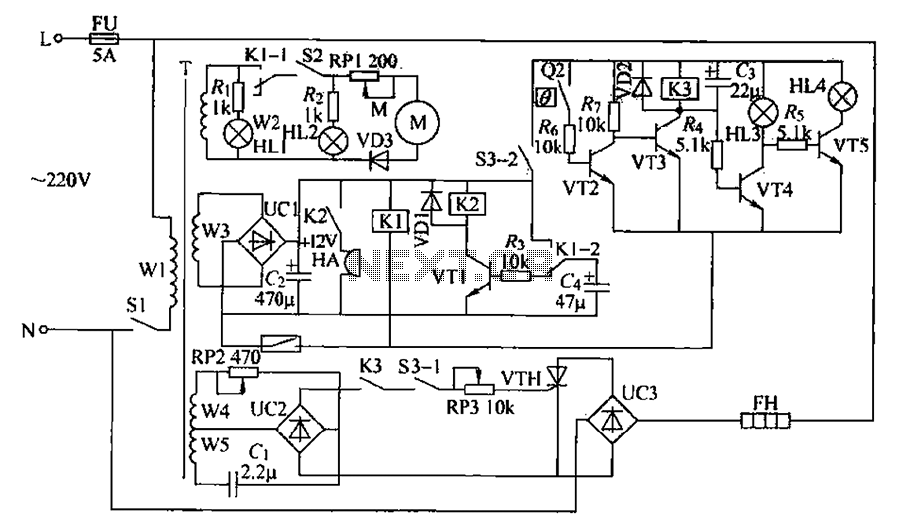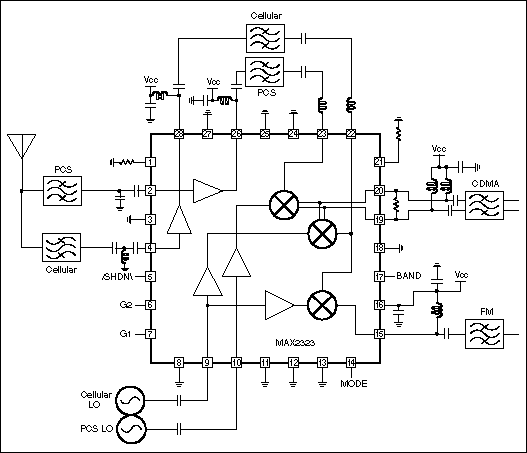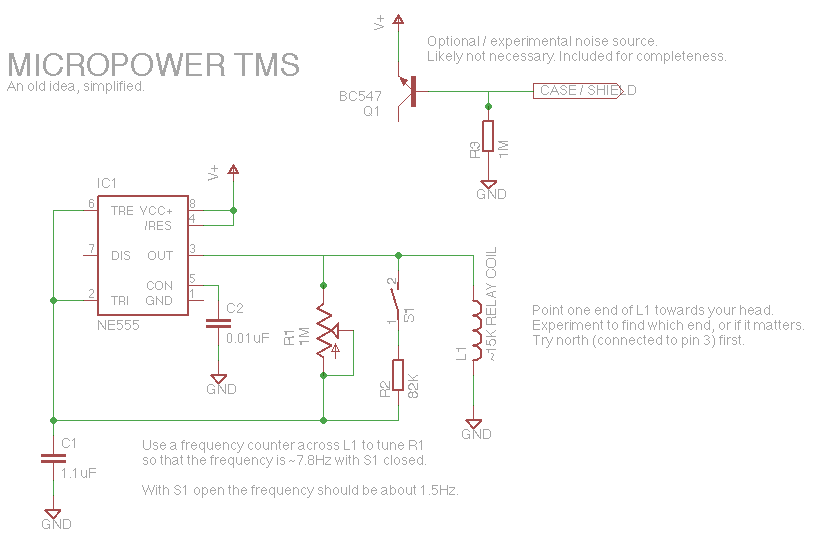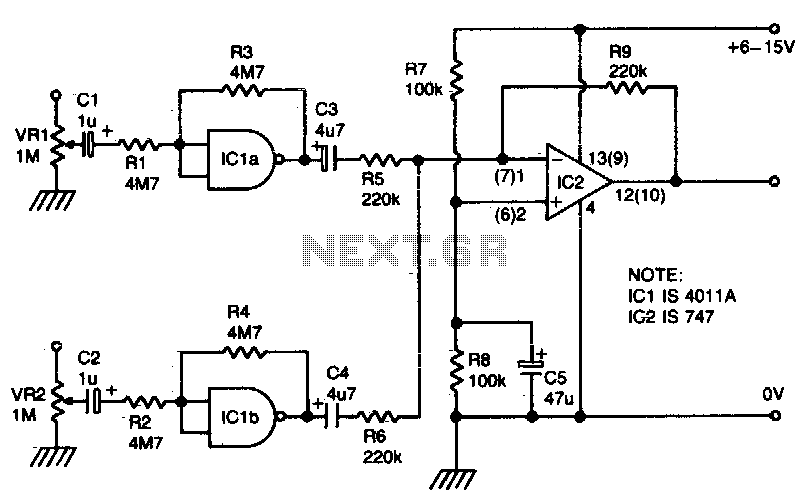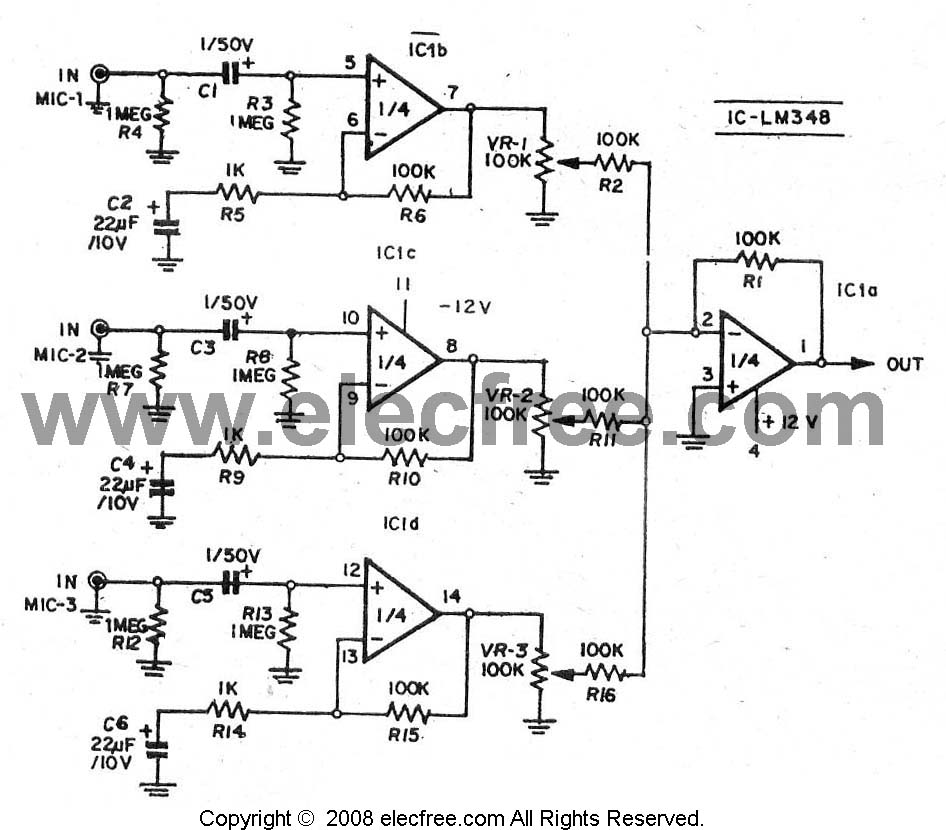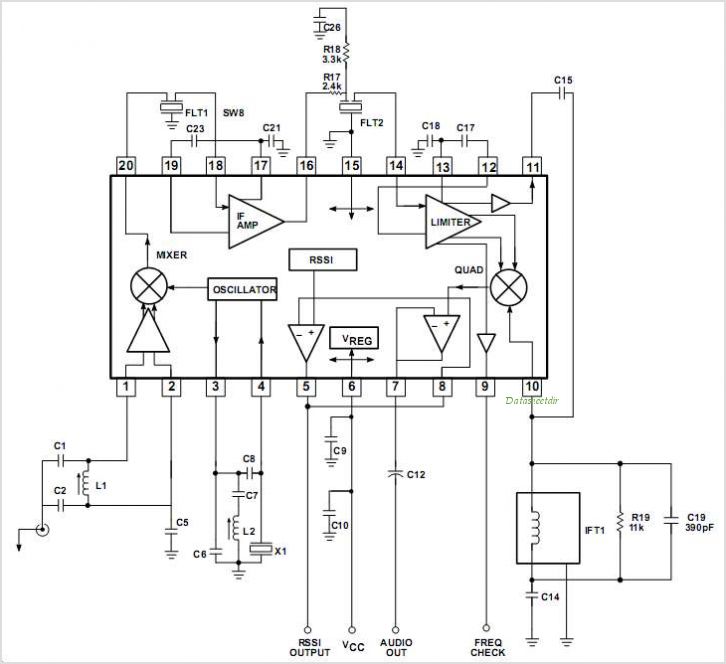
Ultra-Simple Mono-in Panning Mixer
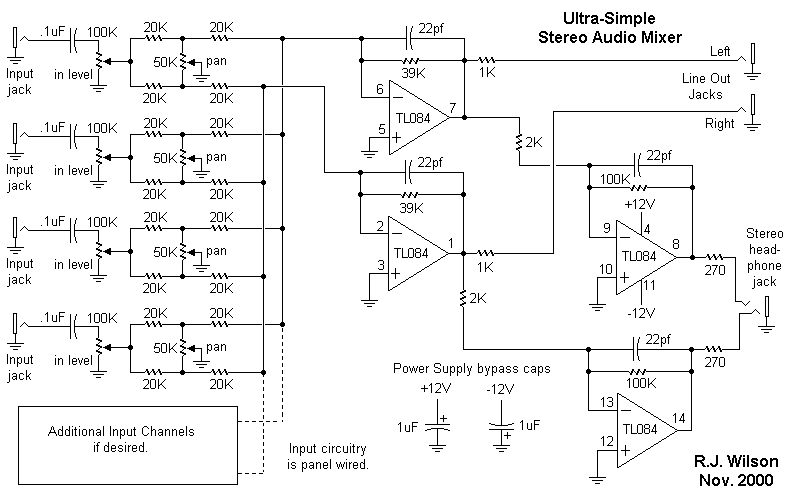
This project represents an older design that has likely been replaced by a more recent version. Nonetheless, it remains a practical design suitable for a home-brew synthesizer. It is important to note that many of these designs lack circuit descriptions, parts lists, or printed circuit board (PCB) layouts, emphasizing the DIY aspect of the project. The designs are intended for individual and educational purposes only, and no permission is granted for large-scale production or sale. This project is categorized as intermediate to advanced, and it is not advisable for beginners who are just starting with synthesizers or electronics. Only the circuit and some explanations are provided, and a considerable amount of project building, troubleshooting, and electronics experience is assumed. Additionally, ownership of electronic equipment such as oscilloscopes and multimeters is expected. Prospective builders should thoroughly read the entire page before ordering PC boards to ensure that the information provided is adequate to successfully complete the project.
This synthesizer project involves a classic analog design that utilizes several key components, including operational amplifiers, voltage-controlled oscillators (VCOs), and filters. The circuit typically functions by generating audio signals through the VCOs, which produce waveforms that can be shaped and modulated. The output from the VCOs is then processed through various filters to create the desired sound characteristics.
The design may include a control voltage (CV) interface for modulation, allowing the user to manipulate pitch and timbre dynamically. Additionally, the synthesizer may feature a low-frequency oscillator (LFO) for modulation purposes, enabling effects such as vibrato or tremolo.
Given the complexity of the circuit, a thorough understanding of analog electronics is necessary. Builders should be familiar with concepts such as feedback loops, signal path design, and component selection to ensure optimal performance. The lack of a detailed parts list and PCB layout requires builders to be resourceful, sourcing components and designing their own layout based on the provided circuit diagram.
Testing and troubleshooting will be essential steps in the building process. It is recommended that builders utilize an oscilloscope and multimeter to monitor signal integrity and voltage levels at various points in the circuit. This will help in identifying any issues that may arise during assembly or operation.
In conclusion, while this synthesizer project is not suited for beginners, it offers an engaging opportunity for those with intermediate to advanced skills in electronics. Successful completion of the project will result in a functional synthesizer capable of producing a wide range of sounds, making it a valuable addition to any home studio.This project is an older design and has most likely been superceded by a newer one. However, it is still a viable design and useful for your home-brew synth. Sorry but most of these do not have circuit descriptions, parts lists or PC board layouts (They really put the `Y` in DIY). The designs are here for individual and educational use only and no permission is given for large scale production for sale. This is an intermediate to advanced project and I do not recommend it as a first project if you are just getting started in synths or electronics. Only the circuit and some explanation are shown here. A lot of project building, troubleshooting and electronics experience is assumed. Additionally, electronic equipment ownership (scope, meters, etc. ) is taken for granted. If you are interested in building this project please read the entire page before ordering PC boards to ensure that the information provided is thorough enough for you to complete the project successfully.
🔗 External reference
This synthesizer project involves a classic analog design that utilizes several key components, including operational amplifiers, voltage-controlled oscillators (VCOs), and filters. The circuit typically functions by generating audio signals through the VCOs, which produce waveforms that can be shaped and modulated. The output from the VCOs is then processed through various filters to create the desired sound characteristics.
The design may include a control voltage (CV) interface for modulation, allowing the user to manipulate pitch and timbre dynamically. Additionally, the synthesizer may feature a low-frequency oscillator (LFO) for modulation purposes, enabling effects such as vibrato or tremolo.
Given the complexity of the circuit, a thorough understanding of analog electronics is necessary. Builders should be familiar with concepts such as feedback loops, signal path design, and component selection to ensure optimal performance. The lack of a detailed parts list and PCB layout requires builders to be resourceful, sourcing components and designing their own layout based on the provided circuit diagram.
Testing and troubleshooting will be essential steps in the building process. It is recommended that builders utilize an oscilloscope and multimeter to monitor signal integrity and voltage levels at various points in the circuit. This will help in identifying any issues that may arise during assembly or operation.
In conclusion, while this synthesizer project is not suited for beginners, it offers an engaging opportunity for those with intermediate to advanced skills in electronics. Successful completion of the project will result in a functional synthesizer capable of producing a wide range of sounds, making it a valuable addition to any home studio.This project is an older design and has most likely been superceded by a newer one. However, it is still a viable design and useful for your home-brew synth. Sorry but most of these do not have circuit descriptions, parts lists or PC board layouts (They really put the `Y` in DIY). The designs are here for individual and educational use only and no permission is given for large scale production for sale. This is an intermediate to advanced project and I do not recommend it as a first project if you are just getting started in synths or electronics. Only the circuit and some explanation are shown here. A lot of project building, troubleshooting and electronics experience is assumed. Additionally, electronic equipment ownership (scope, meters, etc. ) is taken for granted. If you are interested in building this project please read the entire page before ordering PC boards to ensure that the information provided is thorough enough for you to complete the project successfully.
🔗 External reference
